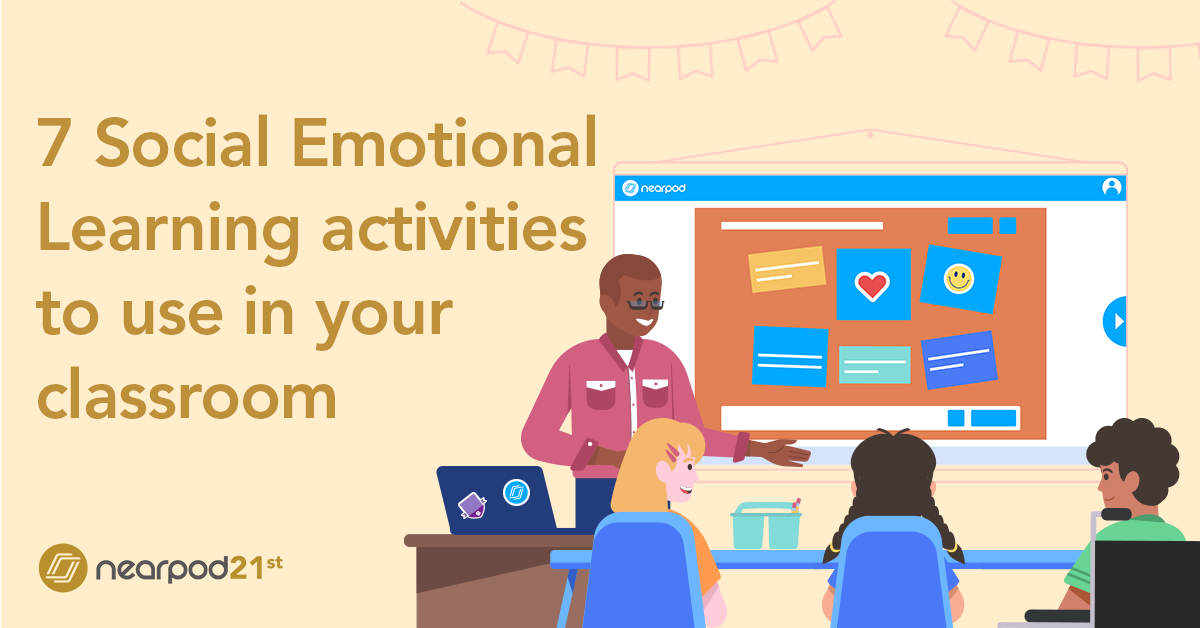In the realm of education, effective Teaching strategies are paramount in fostering a dynamic and engaging learning environment. Among the multitude of approaches available, seven distinct teaching strategies stand out, each offering unique benefits and applications. This article delves into these seven strategies, providing educators with a comprehensive guide to cater to diverse learner needs, cultivate critical thinking, and promote a lifelong love of learning. By incorporating these strategies into their教学实践, educators can empower learners to become active participants in their educational journey and achieve their full potential.

1. Command Style
Definition and Characteristics
The Command Style of teaching is a direct and authoritative approach where the teacher maintains firm control over the classroom environment and learning activities. The teacher provides clear instructions, sets expectations, and closely monitors student behavior and progress. This style is often employed in situations where immediate compliance and adherence to rules are necessary, such as in military training or emergency situations.
Key characteristics of the Command Style include:
- Teacher-centered instruction
- Clear and concise instructions
- Emphasis on obedience and discipline
- Limited student autonomy
Advantages and Applications
The Command Style can be effective in certain contexts, such as:
- Teaching basic skills and knowledge
- Establishing clear routines and procedures
- Maintaining order and discipline in the classroom
- Responding to emergencies
However, it is important to note that the Command Style can be less effective in promoting higher-order thinking skills, creativity, and student engagement. It may also hinder the development of student autonomy and self-directed learning.
| Title | Description |
|---|---|
| Locomotor Movement: Understanding the Body’s Movement Mechanics | Delve into the science of human movement, exploring the mechanics behind walking, running, jumping, and other fundamental movements. |

2. Practice Style
Definition and Characteristics
The Practice Style of teaching focuses on providing learners with ample opportunities to practice and apply their knowledge and skills. This style is particularly effective for developing procedural knowledge, such as math operations or scientific methods. In a Practice Style classroom, students engage in hands-on activities, drills, and exercises designed to reinforce concepts and improve proficiency.
Key characteristics of the Practice Style include:
- Student-centered instruction
- Emphasis on repetition and feedback
- Use of drills, exercises, and hands-on activities
- Opportunities for students to self-correct and improve
Advantages and Applications
The Practice Style can be beneficial in a variety of learning contexts, such as:
- Developing procedural knowledge and skills
- Reinforcing concepts and improving retention
- Providing opportunities for students to self-assess and improve
- Enhancing student confidence and motivation
However, it is important to note that the Practice Style can become monotonous if overused. It is also important to ensure that students are provided with meaningful and varied practice activities to maintain engagement and prevent boredom.
| Title | Description |
|---|---|
| Locomotor Movement: Understanding the Body’s Movement Mechanics | Delve into the science of human movement, exploring the mechanics behind walking, running, jumping, and other fundamental movements. |

3. Cooperative Style
The Cooperative Style of teaching fosters a collaborative learning environment where students work together in small groups to achieve shared goals. This style encourages students to develop social skills, communication skills, and problem-solving abilities. In a Cooperative Style classroom, students engage in group projects, discussions, and other activities that require them to rely on each other’s strengths and support.
Key characteristics of the Cooperative Style include:
- Student-centered instruction
- Emphasis on collaboration and teamwork
- Use of group projects and activities
- Opportunities for students to learn from each other
The Cooperative Style can be beneficial in a variety of learning contexts, such as:
- Developing social and communication skills
- Enhancing problem-solving abilities
- Promoting positive interdependence among students
- Fostering a sense of community and belonging
However, it is important to note that the Cooperative Style can be challenging to implement in large classes or with students who have difficulty working in groups. It is also important to ensure that all students are actively participating and contributing to the group effort.
| Title | Description |
|---|---|
| Locomotor Movement: Understanding the Body’s Movement Mechanics | Delve into the science of human movement, exploring the mechanics behind walking, running, jumping, and other fundamental movements. |

4. Independent Style
The Independent Style of teaching empowers students to take ownership of their learning. In this style, students are given the freedom to explore topics, develop projects, and pursue their interests. The teacher acts as a facilitator, providing guidance and support as needed. This style is particularly effective for fostering critical thinking, self-directed learning, and creativity.
Key characteristics of the Independent Style include:
- Student-centered instruction
- Emphasis on self-directed learning
- Use of open-ended projects and activities
- Opportunities for students to make choices and take responsibility for their learning
The Independent Style can be beneficial in a variety of learning contexts, such as:
- Developing critical thinking and problem-solving skills
- Enhancing self-directed learning and motivation
- Fostering creativity and innovation
- Preparing students for lifelong learning
However, it is important to note that the Independent Style can be challenging for students who are not self-motivated or who have difficulty managing their time. It is also important to ensure that students have the necessary resources and support to succeed in this style of learning.
| Title | Description |
|---|---|
| Locomotor Movement: Understanding the Body’s Movement Mechanics | Delve into the science of human movement, exploring the mechanics behind walking, running, jumping, and other fundamental movements. |

5. Creative Style
The Creative Style of teaching encourages students to think outside the box, explore their imaginations, and express themselves through creative projects. This style is particularly effective for developing problem-solving skills, critical thinking, and communication skills. In a Creative Style classroom, students engage in activities such as storytelling, drama, art, and music.
Key characteristics of the Creative Style include:
- Student-centered instruction
- Emphasis on imagination and creativity
- Use of open-ended activities
- Opportunities for students to express themselves
The Creative Style can be beneficial in a variety of learning contexts, such as:
- Developing problem-solving and critical thinking skills
- Enhancing communication skills
- Fostering creativity and innovation
- Promoting self-expression
| Title | Description |
|---|---|
| Locomotor Movement: Understanding the Body’s Movement Mechanics | Delve into the science of human movement, exploring the mechanics behind walking, running, jumping, and other fundamental movements. |
However, it is important to note that the Creative Style can be challenging for students who are not comfortable with ambiguity or who have difficulty expressing themselves. It is also important to ensure that students have the necessary resources and support to succeed in this style of learning.

6. Discovery Style
Definition and Characteristics
The Discovery Style of teaching encourages students to actively explore and construct their own knowledge through hands-on experiences and investigations. This style is particularly effective for developing critical thinking skills, problem-solving abilities, and a love of learning. In a Discovery Style classroom, students engage in activities such as experiments, simulations, and research projects that allow them to discover concepts and principles for themselves.
Key characteristics of the Discovery Style include:
- Student-centered instruction
- Emphasis on hands-on experiences and investigations
- Use of open-ended questions and activities
- Opportunities for students to make their own discoveries
Advantages and Applications
The Discovery Style can be beneficial in a variety of learning contexts, such as:
- Developing critical thinking and problem-solving skills
- Enhancing creativity and innovation
- Fostering a love of learning
- Preparing students for lifelong learning
| Title | Description |
|---|---|
| Locomotor Movement: Understanding the Body’s Movement Mechanics | Delve into the science of human movement, exploring the mechanics behind walking, running, jumping, and other fundamental movements. |
However, it is important to note that the Discovery Style can be challenging for students who are not self-motivated or who have difficulty learning independently. It is also important to ensure that students have the necessary resources and support to succeed in this style of learning.
- Coffee
- Tea
- Milk

7. Problem-Solving Style
The Problem-Solving Style of teaching encourages students to develop critical thinking skills and problem-solving abilities by engaging them in real-world problems and scenarios. This style is particularly effective for preparing students for the challenges they will face in their personal and professional lives. In a Problem-Solving Style classroom, students work collaboratively to identify problems, analyze data, and develop and implement solutions.
Key characteristics of the Problem-Solving Style include:
- Student-centered instruction
- Emphasis on critical thinking and problem-solving
- Use of real-world problems and scenarios
- Opportunities for students to work collaboratively
| Title | Description |
|---|---|
| Locomotor Movement: Understanding the Body’s Movement Mechanics | Delve into the science of human movement, exploring the mechanics behind walking, running, jumping, and other fundamental movements. |
The Problem-Solving Style can be beneficial in a variety of learning contexts, such as:
- Developing critical thinking and problem-solving skills
- Enhancing collaboration and teamwork
- Preparing students for real-world challenges
- Fostering a lifelong love of learning
However, it is important to note that the Problem-Solving Style can be challenging for students who are not comfortable with ambiguity or who have difficulty working in groups. It is also important to ensure that students have the necessary resources and support to succeed in this style of learning.

Final Thought
The exploration of these seven teaching strategies has provided a valuable overview of the diverse approaches available to educators. Each strategy offers distinct advantages and applications, empowering educators to cater to the unique needs of their learners. By skillfully implementing these strategies, educators can create dynamic and engaging learning environments that foster critical thinking, collaboration, and a passion for knowledge. The ultimate goal is to equip learners with the skills and confidence they need to succeed not only in academic pursuits but also in their personal and professional lives.



